arviz.kde — ArviZ dev documentation (original) (raw)
arviz.kde(x, circular=False, **kwargs)[source]#
One dimensional density estimation.
It is a wrapper around kde_linear() and kde_circular().
Parameters:
Data used to calculate the density estimation.
circularbool, optional
Whether x is a circular variable or not. Defaults to False.
kwargsdict, optional
Arguments passed to kde_linear() and kde_circular(). See their documentation for more info.
Returns:
gridnumpy.ndarray
Gridded numpy array for the x values.
Numpy array for the density estimates.
bwfloat
The estimated bandwidth. Only returned if requested.
See also
Compute and plot a kernel density estimate.
Examples
Default density estimation for linear data
import numpy as np import matplotlib.pyplot as plt from arviz import kde
rng = np.random.default_rng(49) rvs = rng.gamma(shape=1.8, size=1000) grid, pdf = kde(rvs) plt.plot(grid, pdf)
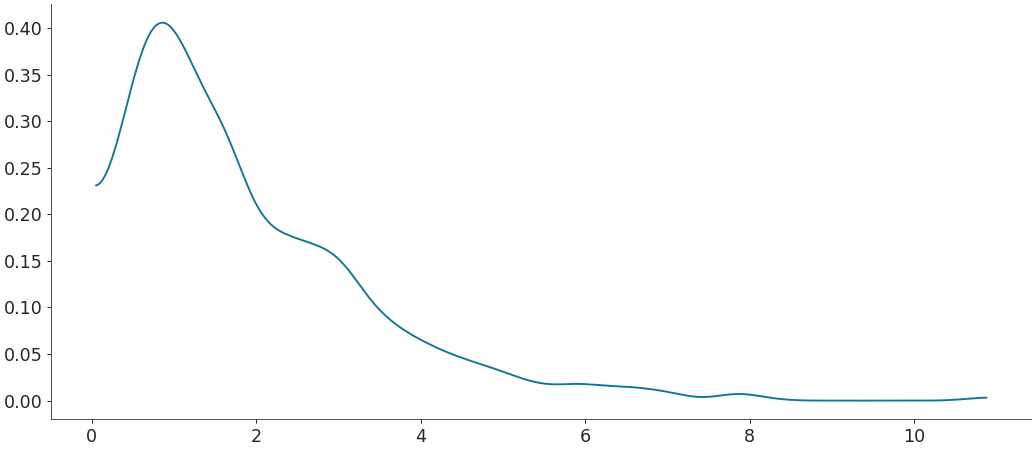
Density estimation for linear data with Silverman’s rule bandwidth
grid, pdf = kde(rvs, bw="silverman") plt.plot(grid, pdf)
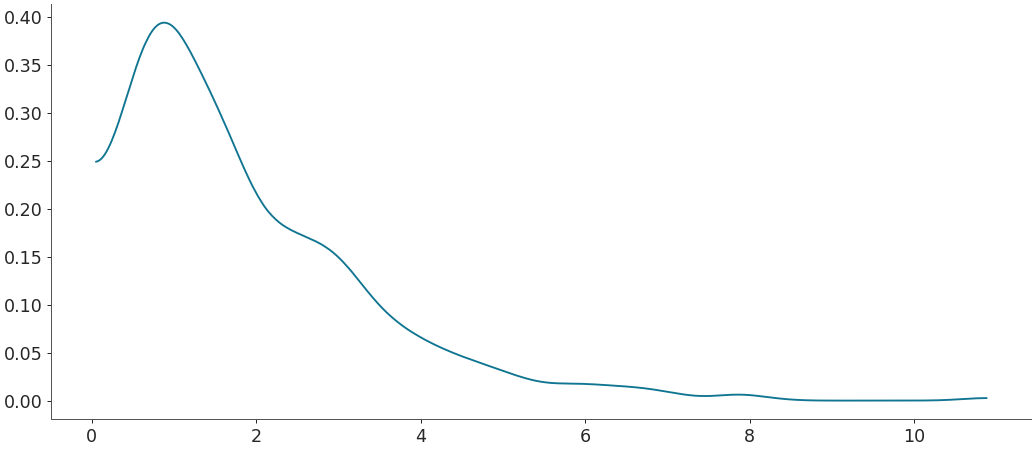
Density estimation for linear data with scaled bandwidth
bw_fct > 1 means more smoothness.
grid, pdf = kde(rvs, bw_fct=2.5) plt.plot(grid, pdf)

Default density estimation for linear data with extended limits
grid, pdf = kde(rvs, bound_correction=False, extend=True, extend_fct=0.5) plt.plot(grid, pdf)
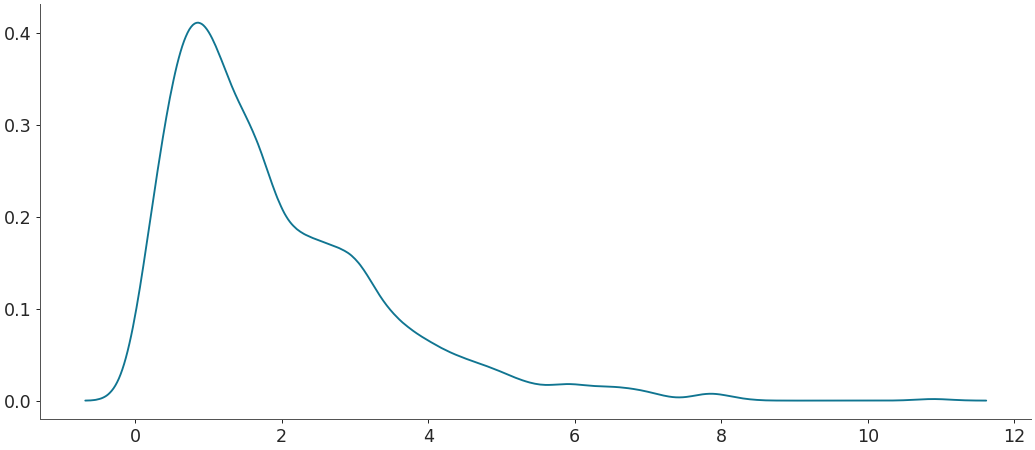
Default density estimation for linear data with custom limits
It accepts tuples and lists of length 2.
grid, pdf = kde(rvs, bound_correction=False, custom_lims=(0, 11)) plt.plot(grid, pdf)
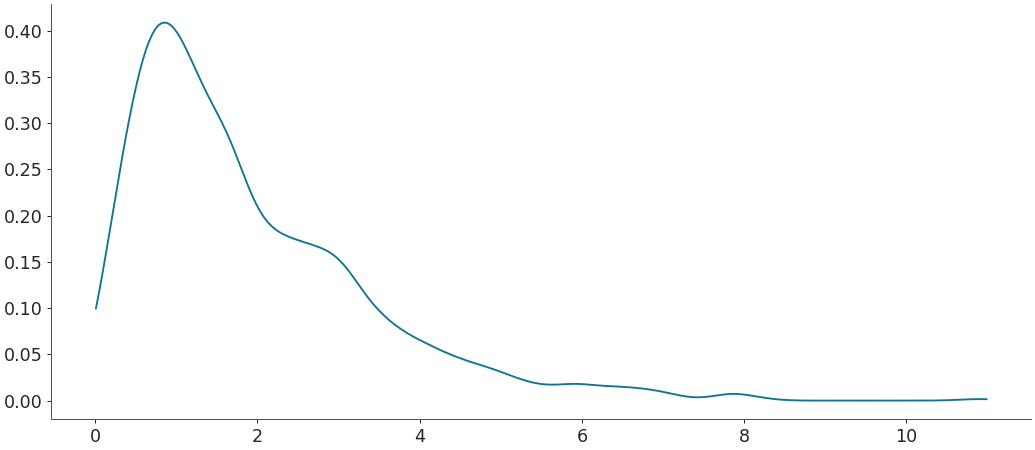
Default density estimation for circular data
rvs = np.random.vonmises(mu=np.pi, kappa=1, size=500) grid, pdf = kde(rvs, circular=True) plt.plot(grid, pdf)
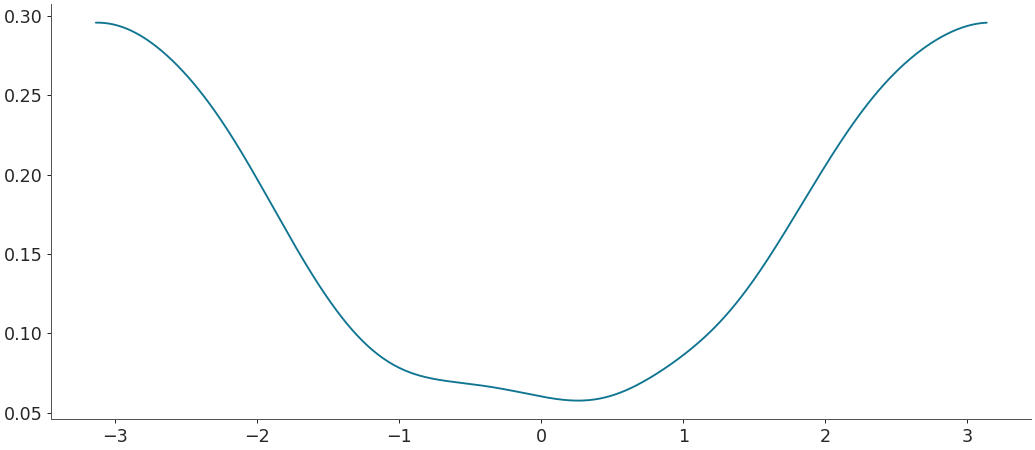
Density estimation for circular data with scaled bandwidth
rvs = np.random.vonmises(mu=np.pi, kappa=1, size=500)
bw_fct > 1 means less smoothness.
grid, pdf = kde(rvs, circular=True, bw_fct=3) plt.plot(grid, pdf)
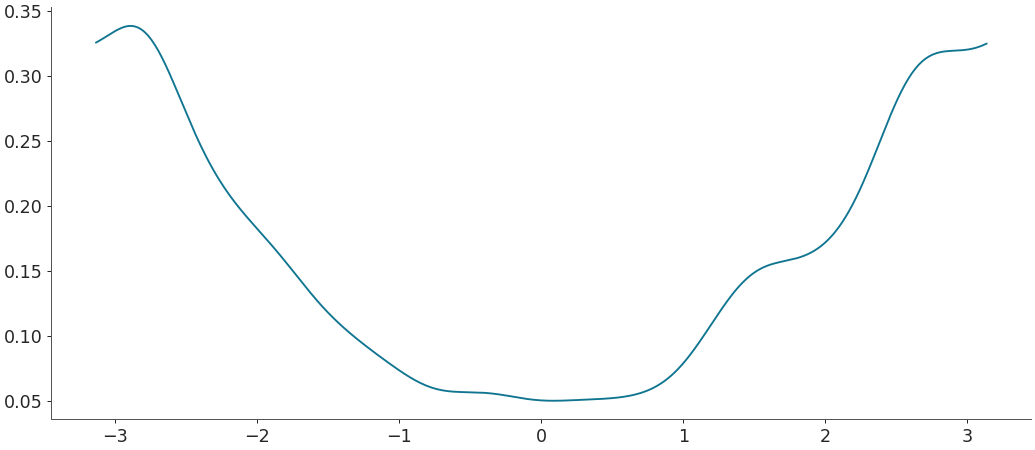
Density estimation for circular data with custom limits
This is still experimental, does not always work.
rvs = np.random.vonmises(mu=0, kappa=30, size=500) grid, pdf = kde(rvs, circular=True, custom_lims=(-1, 1)) plt.plot(grid, pdf)
